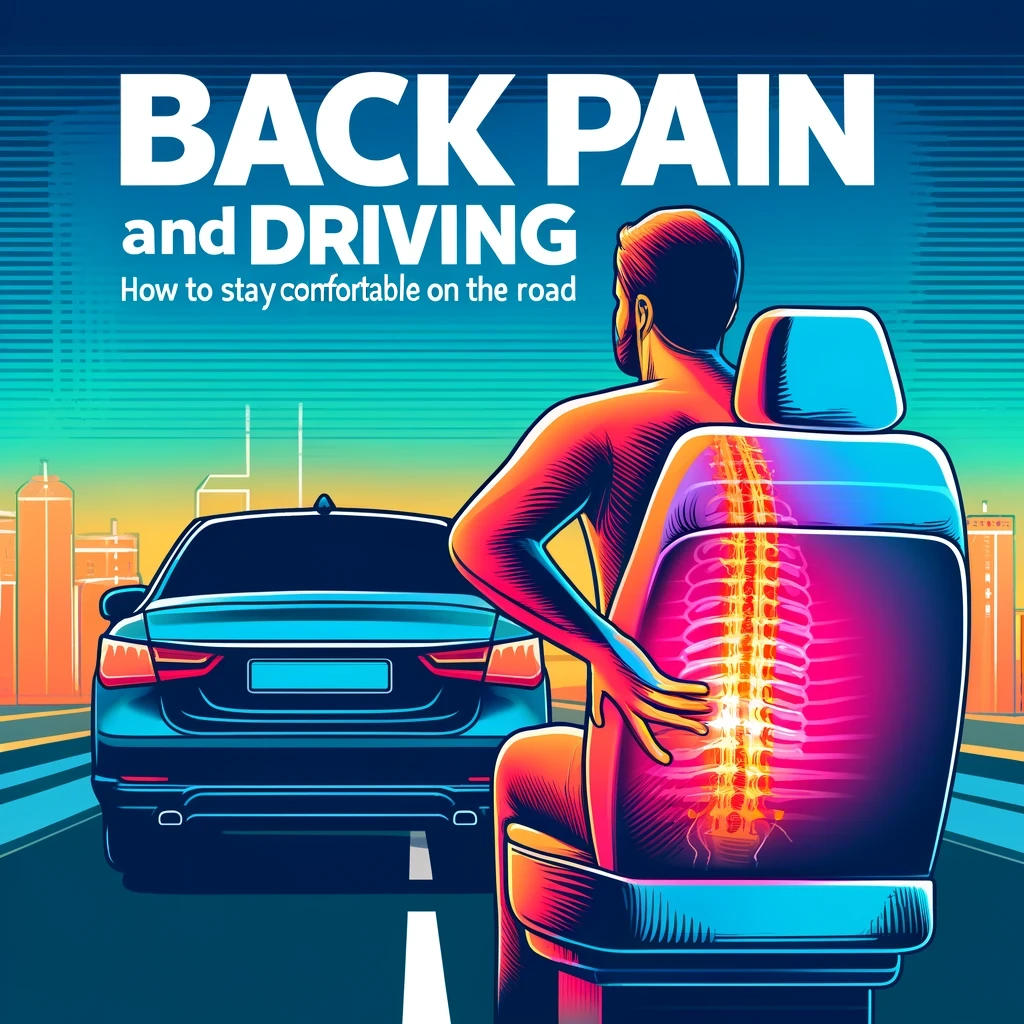
Table of Contents
Driving is an integral part of our daily lives, whether it’s for commuting to work, running errands or going on a road trip. However, for many people, long hours behind the wheel can lead to discomfort and chronic back pain. Addressing back pain is crucial for drivers to ensure they can stay comfortable and safe on the road. In this article, we’ll explore the connection between back pain and driving, preventive measures, exercises, healthy habits, and when to seek medical help.
Understanding Back Pain
Types of Back Pain
Back pain can be categorized into two main types: acute and chronic. Acute back pain comes on suddenly and usually lasts for a few days to a few weeks. Chronic back pain, on the other hand, persists for more than three months and can be constant or intermittent.
Common Causes of Back Pain
Several factors can contribute to back pain, including poor posture, muscle strain, herniated discs, and degenerative conditions like arthritis. Identifying the underlying cause of your back pain is essential for effective treatment and prevention.
Back Pain and Driving: The Connection
How Driving Affects Your Back
Driving for extended periods can put significant strain on your back. Sitting for long hours can compress your spine and lead to muscle fatigue. The vibrations from the car and the need to constantly adjust your position can also exacerbate back pain.
Risk Factors for Drivers
Certain factors can increase the risk of back pain for drivers, such as poor seat design, incorrect seat positioning, and lack of movement. Additionally, drivers who already have pre-existing back conditions are more likely to experience discomfort while driving.
Preventive Measures for Back Pain While Driving
Proper Seating Position
Adjusting Your Seat
One of the most critical steps in preventing back pain while driving is ensuring your seat is correctly adjusted. Your seat should be at a height where your knees are level with your hips. Your back should be fully supported by the seat and your feet should comfortably reach the pedals without straining.
Using Lumbar Support
Lumbar support is essential for maintaining the natural curve of your lower spine. Many car seats come with built-in lumbar support, but if yours doesn’t, consider using a small cushion or a specially designed lumbar support pillow.
Regular Breaks
Importance of Taking Breaks
Taking regular breaks during long drives is crucial to prevent back pain. Aim to stop every hour or two to stretch and move around. This will help relieve muscle tension and improve circulation.
Stretching Exercises
During your breaks, perform simple stretching exercises such as hamstring stretches, calf raises and shoulder rolls. These exercises can help reduce stiffness and keep your muscles flexible.
Vehicle Modifications
Seat Cushions and Supports
Investing in quality seat cushions and supports can make a significant difference in your comfort while driving. Memory foam cushions, gel pads and ergonomic seat covers can provide additional support and reduce pressure on your back.
Steering Wheel Adjustments
Adjusting the steering wheel can also help minimize back pain. Make sure the steering wheel is within easy reach and allows your arms to remain slightly bent. This can prevent straining your shoulders and upper back.
Exercises to Reduce Back Pain
Stretching Exercises
Simple Stretches for Drivers
Incorporate simple stretches into your daily routine to keep your back flexible. Cat-cow stretches, seated twists and neck stretches can be done easily at home or during breaks on the road.
Strengthening Exercises
Core Strengthening
A strong core can help support your back and reduce pain. Exercises like planks, bridges and leg lifts can strengthen your abdominal muscles and provide better stability for your spine.
Back Strengthening
Strengthening the muscles in your back is equally important. Superman exercises, bird-dog stretches and rows can help build strength and alleviate back pain.
Healthy Habits for Drivers
Maintaining a Healthy Weight
Carrying excess weight can put additional strain on your back. Maintaining a healthy weight through a balanced diet and regular exercise can help reduce back pain and improve overall health.
Staying Hydrated
Staying hydrated is essential for keeping your muscles and joints healthy. Dehydration can lead to muscle cramps and stiffness, which can exacerbate back pain. Make sure to drink plenty of water, especially during long drives.
Medical Interventions
When to See a Doctor
If your back pain persists despite taking preventive measures and making lifestyle changes, it’s essential to seek medical advice. A doctor can help diagnose the underlying cause of your pain and recommend appropriate treatments.
Available Treatments
Various treatments are available for back pain, including physical therapy, chiropractic care, medications and in some cases, surgery. Your doctor can help determine the best course of action based on your specific condition.
Conclusion
Back pain doesn’t have to be a part of your driving experience. By understanding the connection between back pain and driving, taking preventive measures, incorporating exercises and adopting healthy habits, you can stay comfortable on the road. Remember, if your pain persists, seeking medical advice is crucial.
FAQs
How can I adjust my car seat to reduce back pain?
To reduce back pain, adjust your car seat so that your knees are level with your hips, and your back is fully supported. Use lumbar support to maintain the natural curve of your spine.
What are the best exercises to do during a driving break?
During a driving break, perform simple stretches such as hamstring stretches, calf raises, and shoulder rolls to reduce stiffness and improve circulation.
How often should I take breaks during long drives?
It’s recommended to take breaks every hour or two during long drives. Use these breaks to stretch, move around, and relieve muscle tension.
Can a seat cushion really help with back pain?
Yes, a quality seat cushion can provide additional support and reduce pressure on your back, helping to alleviate discomfort during long drives.
When should I seek medical advice for back pain related to driving?
If your back pain persists despite taking preventive measures and making lifestyle changes, it’s important to seek medical advice to diagnose the underlying cause and receive appropriate treatment.


